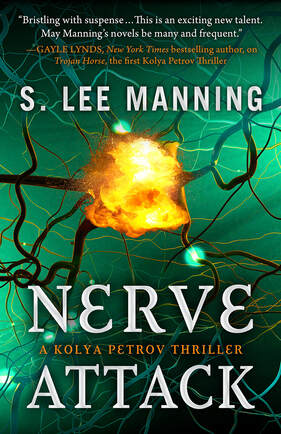As a Jew, I understand that the Ultras only represent a small fraction of the Jewish community - that Jews come in various sizes, shapes, and belief systems, but that this may be confusing for non-Jews who may see the shows on Netflix but not personally know much about the Jewish community. As a public service, I am offering the following rough guide to the Jewish people in the United States. It is not comprehensive by any means, and I will undoubtedly leave out people and groups, and offend someone or other.
There is also some self-interest here - since I'm Jewish and I write a spy series with a Russian Jewish immigrant who is working as an American spy. (The two books in the series are Trojan Horse and Nerve Attack. Check out my books on my other pages.) It helps if people understand just what it means to be Jewish.
Here goes:
First, who is Jewish? To be Jewish does not mean believing in anything in particular. It means that you are a member of the Jewish people. And that's who? Under traditional Jewish law, a person with a Jewish mother or a person who converts to Judaism is Jewish. That means that a person with a Jewish father and a non-Jewish mother would NOT be considered Jewish traditionally unless that child formally converted. If a Jewish person formally converts to another religion, they are no longer considered Jewish. (Messianic Jews are not considered Jewish by the Jewish community. Nor are members of the Black Israelite movement who tend to blend some Jewish practices with Christianity - but I'm not diving into that can of worms.) However, in some parts of the Jewish community, the exclusion of people with a Jewish father but non-Jewish mother is changing. In 1983, American reform rabbis (see below for reform) determined that a person with a Jewish father but non-Jewish mother was Jewish if that person was raised as a Jew, practices Judaism, and identifies as a Jew. (Note: The reform definition is not accepted by the Orthodox or the State of Israel. Also note: generally, the Orthodox only recognize those converted under Orthodox rules as Jews. Further note: people selected for extermination as Jewish under the Third Reich were people who had two Jewish grandparents of any gender, regardless of whether they had converted - or their parents had converted - to Christianity. One Jewish grandparent was sufficient for being killed if a person married a Jew or was associated with the Jewish community.)
Ethnicity: I'm going to pass quickly over this one but suffice it to say that while the majority of Jews in this country are Ashkenazi, with a history in Western and Eastern Europe, (and who can physically look like what is generally considered "Jewish" or can be blond and blue-eyed) although the Ashkanazie are genetically closer to Middle Eastern people than to Europeans, Jews encompass a wide variety of ethnicities: Sephardic Jews - from Spanish countries, Mizrahi Jews - from Middle Eastern and North African countries, Ethiopian Jews, known as Beta Israel, Black Jews, and Asian Jews. Don't assume that someone is Jewish or not by their looks.
The various religious (and not) denominations
Secular Jews: There are Jews do not go to services or follow any of the religious rules, but who still identify as Jewish. (See the above definition of who is a Jew.) Secular Jews can be atheist or agnostic, they can also believe in some form of God, but they do not belong to any organized denomination or synagogue. They may be proud of the history, the accomplishments, and the cultural aspects of Judaism. They may appreciate or celebrate some Jewish holidays, like Hanukah or Passover, - or not. They may also believe in tikkun olam, which literally means to heal the world - and engage in social action. As an aside, the protagonist in my novels is a secular Jew - who very much believes in working for a better world - i.e. tikkun olam, although he never calls it that.
Reform Judaism: The largest American Jewish denomination, began in Germany in the 1800s, Reform Judaism doesn't require adherence to the very extensive Jewish law known as halakha. Reform Judaism seeks to integrate Jewish practices with an evolving society and culture. Although some reform Jews do observe laws such as the laws on kosher food, adhering or not to halakha is a matter of personal choice. Reform Jews use electricity and cars on holidays and Shabbat, services have more English and are substantially shorter. It is socially and politically progressive. Women have full equality in services. Officially, reform Judaism is supportive of the LGBTQ movement, including the transgender community and those who are gender non-conforming. Social action is an important feature.
There are other smaller groups that are somewhere between reform and conservative- Reconstructionists, Jewish Renewal, Humanist Jewish - but I'm writing a blog, not a thesis. Sticking to the major points.
Conservative Judaism: Conservative Judaism seeks to retain much of the traditional practices of Judaism and is considered midway between Reform and Orthodox. Services are conducted in Hebrew and are not dissimilar in content to those of the Orthodox. Conservative Jews are expected to keep kosher and follow more of the traditional halakha. However, in Conservative synagogues, men and women sit together, women can be rabbis and have full equality in religious rituals, Conservative Jews can drive to the synagogue, and they can stream religious services.
Modern Orthodox: If you watched Shtisel, you might remember when one of the main characters asked with a curled lip of disgust - "What am I, Modern Orthodox?" Modern Orthodox follow the rules of traditional halakha, the kosher laws, no use of cars or electronics on Shabbat or designated holidays, services are segregated by gender, and while women can lead prayers in all-women groups, they do not participate in minyans, read the Torah in mixed services, or act as rabbis. There is some variability on whether women cover their hair or whether they can wear pants. However, Modern Orthodox, other than obeying the religious laws, live in the 21st century. They work as doctors, lawyers, teachers, computer scientists, government employees - at all possible jobs - as long as they can do so while observing the law. They watch television and movies, read novels (and write them), participate in sports, and wear clothes that while reasonably modest, are also reasonably modern. And by "they" - I mean men AND women.
Ultra-orthodox: The alternative word for the Ultra-orthodox is Haredin. We're now into Shtisel territory. These are the Jews who wear the black suits and black hats, the women who always cover their hair and never wear pants. Strict adherence to Jewish law - like the Modern Orthodox - but also rejection of much of modern society. No movies, no television, very little if any interaction between the ultras and anyone outside the community - from less observant Jews to non-Jews. In fact, some of them would regard a Jew like me as not Jewish. (With the exception of certain Hasidic sects like the Lubavitchers who try to lure less observant or secular Jews back into the observant fold.) While technology may be used, the internet is limited, and smart phones forbidden or strongly discouraged. The role of women is also strictly prescribed. Not only is seating segregated by gender in synagogues - during services, women sit in balconies or behind screens so that men can't even catch a glimpse of them. Some Ultras in Israel not only want women to have separate seating areas on busses, refuse to sit next to women on planes, but want to eliminate even the images of women in public ads or newspaper photographs. Large families are common and encouraged. However, in an interesting role reversal, it is usually the Haredin women who work outside the home so that their husbands will be free to pursue a life of studying the Torah, and many Haredin women see themselves in partnership with their husbands in creating a religious home. The ultra-orthodox are also split into two groups - the Hasidic, who are the spiritual descendants of a religious reform movement in the 18th century that sought to inject joy into observance and who engage in ecstatic prayer, and the Yeshivish, who reject the Hasidic movement and put more emphasis on intellectual study. Television shows like Shtisel have made them more sympathetic, even to me - who as a Jew somewhere between secular and reform, isn't all that thrilled about their practices, especially with regards to women.
And with that - I'm ending my rough guide. This is meant to be a starting place - for those who have little knowledge of Jews or Judaism, not the total sum and knowledge. I probably left out some small groups. I'm sure I left out details or made some mistakes. Feel free to point them out, and I will feel free to ignore you. What I hope I conveyed was the complexity of the community and the wide range of practices engaged in by people who identity as Jewish. For more information, check out My Jewish Learning online or the many, many books that have been written about Jews and Judaism from different perspectives.








 RSS Feed
RSS Feed